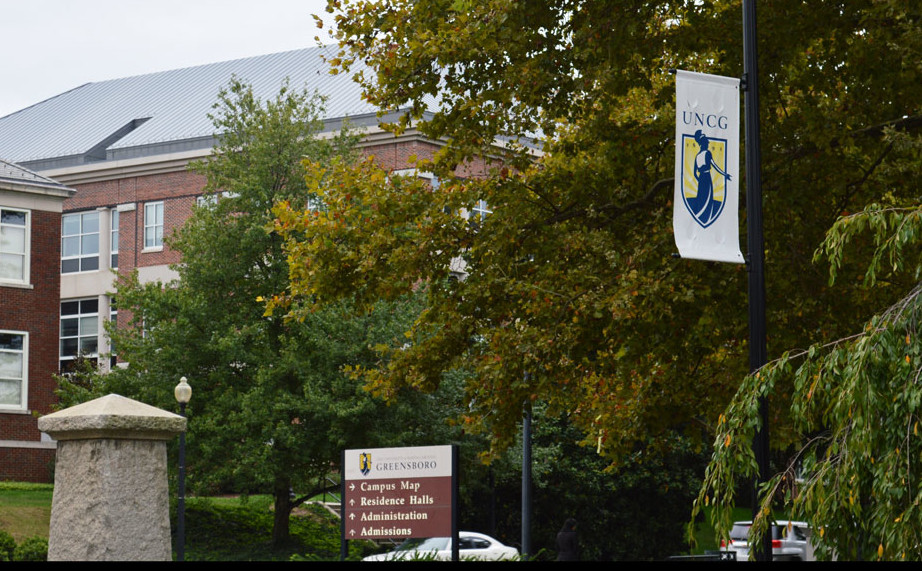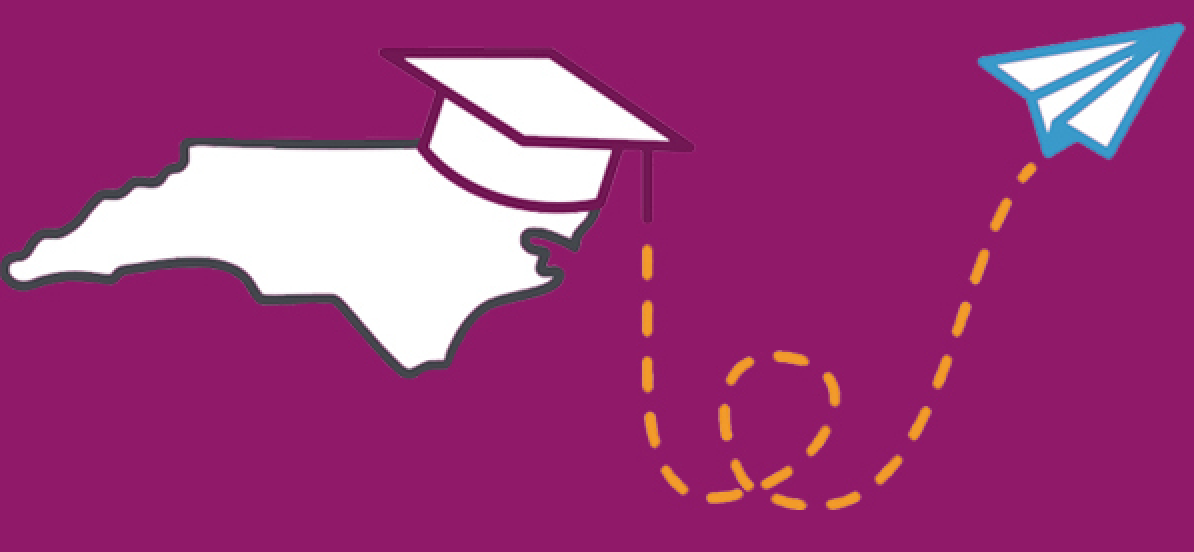The post below is excerpted from “The Commitment Revisited: Financial Aid and Tuition Policy in North Carolina,” a report on Public and Private Colleges and Universities and Community Colleges.
Debt-Minimizing Programs
Since 2003, five UNC institutions have initiated debt-minimizing programs with the stated goal of eliminating or reducing the proportion of financial aid that is provided to students in the form of loans. Each of the five UNC institutions – UNC-Chapel Hill, N.C. State University, Appalachian State University, UNC-Wilmington, and UNC-Greensboro – have developed programs with different missions, requirements, and funding mechanisms. The five universities are among the numerous institutions nationwide implementing such programs to reduce debt for low-income students. The programs at N.C. State, Appalachian State University, and UNC-Greensboro are for North Carolina residents only, while the programs at UNC-Chapel Hill and UNC-Wilmington are for both resident and non-resident students.
Carolina Covenant[1] is the name for the college financial aid program initiated by UNC-Chapel Hill in October 2003. The university promises that students from low-income families can graduate from UNC-Chapel Hill with no student loan debt. Also, the program includes comprehensive efforts by the university to recruit more students from low-income families, along with counseling and academic support for participants.
The threshold income for eligibility for UNC-CH’s first class of Covenant scholars (224 students in the 2004-05 academic year) was 150 percent of the federal poverty level. In 2005-06, eligibility was expanded to include dependent students from families at 200 percent or below of the federal poverty standard. As of 2012, more than 4,000 students had received aid through the Carolina Covenant program. Since admittance into UNC-CH is “need-blind,” Covenant recipients must meet the same academic qualifications as students not receiving aid.
Programs like Carolina Covenant require sizable endowments and a large, consistent stream of annual giving.
UNC-CH has sought private donations to assist with funding the initiative, including a special $10 million fundraising campaign chaired by basketball coach Roy Williams toward an endowment for the program. In 2005, the UNC-CH campus Board of Trustees approved allocating all revenues from the sale of trademark-licensed university products to scholarships and financial aid. A portion of this revenue goes toward the Covenant program.
In 2011, researchers looked at the Carolina Covenant since UNC-Chapel Hill was “the first public university to offer a financial aid program replacing loans with grants.” They found that the Covenant is a: “financial aid initiative started by UNC-Chapel Hill to provide an undergraduate education to low-income students without the use of loans. Through a combination of federal, state, and institutional grants packaged with a 12-14 hour federal work study position, the program meets 100 percent of need without the use of loans. The university communicates the message to students that if you meet the academic requirements for admission, finances will not be a barrier to attendance.”[2]
The researchers said the Covenant was similar to a program first instituted by Princeton University, and that after the Covenant was implemented, several other public institutions followed suit. Those include the University of Virginia, University of Pennsylvania, and Indiana University. They found that “[t]his wave of creating major no-loan programs for low-income students represents one of the first and perhaps most prominent examples of the role of competition in improving need-based financial aid and access to higher education.”

The researchers noted that UNC-Chapel Hill was already meeting 100 percent of the need of students prior to implementing the Covenant, but that the Covenant formalized the university’s commitment: “Branding the university’s commitment to low-income students in the form of a named program distinguished Carolina’s access initiative from prior efforts.” They concluded, “The decision to make such a public commitment to low-income students required an understanding of the role of Carolina’s brand, which is tied directly to the ‘best buy’ distinction the institution routinely receives” in rankings of colleges and universities.[3]
In April 2006, N.C. State University announced Pack Promise.[4] The program provides financial aid to approximately 325 students in each class whose family income is at or below 150 percent of federal poverty level. The university seeks to add 200 new freshmen each year. A total of 1,000 Pack Promise students were enrolled in 2012-13. The institution guarantees that the participant’s student need-based loans will not exceed $3,500; before 2011-12, the ceiling for the guarantee was $2,500. Along with aid, Pack Promise beneficiaries are entitled to mentoring, financial aid counseling, and research opportunities. The program is funded by private donations and by a portion of the institution’s most recent campus-initiated tuition increase. Since 2011-12, Pack Promise has been available only to residents of North Carolina.
“N.C. State attracts many first-generation college students who’ve had no family history of success in higher education and [who] in many cases do not have the same support mechanisms of students from families with a history of college graduates,” said former N.C. State Provost Larry Nielsen. “It’s important that we help them make the transition to college life and build the supports that will help them graduate on time, which is in itself a cost-saving measure.”
In December 2006, Appalachian State University unveiled Appalachian Commitment to a College Education for Student Success (ACCESS).[5] The program is limited to students at or below federal poverty level, and Appalachian’s goal is for participants to graduate with no student loan debt. The program will ensure that recipients receive enough aid to cover the entire cost of attendance, and possibly a job on campus to provide money for personal expenses.
About 50 students per year will participate in the ACCESS program. The scholarships are paid for by the proceeds from a private endowment fund started by former ASU Chancellor Ken Peacock. Peacock’s first gift to the endowment was money that was donated to a memorial fund for his mother.
“These young people have shown leadership, and they have done well on their SATs,” said Peacock. “They have overcome challenges and demonstrated that they should have the right to graduate debt free.” [6]
The fourth tuition-discounting program is UNC-Wilmington’s S.O.A.R. (Success, Opportunities, Aid, Responsibilities) program, which began in Fall 2007. The program provides financial aid for approximately 275 students each year whose family incomes are at or below 200 percent of the federal poverty level. The original goal involved limiting loan debt to $1,000 or less for students with a federal work study award. S.O.A.R. recipients incur debt at an amount lower than their peers. Recipients also receive academic support, financial aid counseling, and academic assistance. In 2012-13, the S.O.A.R. program expanded to include out-of-state students.

“This initiative was advocated by UNC-W students on the Campus-Initiated Tuition Increase Committee, and their maturity and concern really impressed me,” said Rosemary DePaolo, former Chancellor of UNC-Wilmington. “It’s important to me that we help make a college education accessible for as many North Carolina students as possible. S.O.A.R. will enable us to reach out to 500 more students, to help them make the transition to college life and to encourage them to graduate on time. This is, in itself, a cost-saving measure not only for these students and their families, but also for the university and the taxpayers.”
Beginning in fall 2010, UNC-Greensboro started a new program called UNC-G Guarantee,[7] awarding the scholarship to 107 students as of 2013. In 2010-11, 35 students received the scholarship, with 38 students selected in 2011-12, and 34 students in 2012-13. The program is available to students whose family income is at or below federal poverty level. Initial funding for the program comes from a $6 million anonymous gift to the university that was earmarked for financial aid.
Former UNCG Chancellor Linda Brady said, “As a public university, UNC-G has a special obligation to provide access, especially for first-generation college students and others with limited means.” In addition to the financial aid, students receive an array of academic support services to ensure they have every opportunity to be successful in college.
| Table: Summary of Programs Created at Public UNC Institutions To Minimize Debt | ||||
| Program | Residency of Participants | Financial Eligibility Threshold of Participants | Financial Provisions | Source of Program Funding |
| UNC-Chapel Hill’s Carolina Covenant
|
In-state and out-of-state |
200% or less of federal poverty level | Recipients will graduate with no loan debt | Private donations and trademark licensing revenue |
| N.C. State’s
Pack Promise
|
In-state only since 2011-12 | 150% or less of federal poverty level
|
Recipients’ student loans will not exceed $3,500 | Private donations and tuition revenue
|
| Appalachian State’s
ACCESS
|
In-state only | 100% or less of federal poverty level
|
Goal is recipients will graduate with no loan debt | Private donations |
| UNC-Wilmington’s
S.O.A.R.
|
In-state; out-of-state since 2012-13 | 200% or less of federal poverty level
|
Recipients’ student loans will be kept low | Private donations and tuition revenue |
| UNC-Greensboro’s
Guarantee
|
In-state only | 100% or less of federal poverty level | Recipients will graduate with little or no student loan debt | A large private donation is funding the program initially, but UNC-G is seeking other donations |
Beginning in August 2007, Davidson College, a private institution, replaced student loans with grants, under a program called The Davidson Trust. Davidson was the first national liberal arts college to completely eliminate student loans in its financial aid packages. In the fall of 2011, 47 percent of Davidson students received financial support from The Davidson Trust. It costs Davidson $3.5 million annually to replace loans with grants, and will require a total of $70 million to fully endow the initiative. The Davidson Trust received a $25 million gift in 2012. The college was able to begin the effort because of a $15 million gift from The Duke Endowment of Charlotte. In approving the policy, college trustees committed to lead the effort to raise the necessary funds and pledged neither to raise tuition nor to reduce academic programming to meet the costs of the policy.[8]
Endnotes
[1] The Carolina Covenant Report Card. Online at: http://carolinacovenant.unc.edu/.
[2] Michael S. Harris and Bradley Barnes, “Branding Access Through the Carolina Covenant: Fostering Institutional Image and Brand,” Journal of Student Financial Aid, Vol. 41, No., 2, National Association of Student Financial Aid Administrations, Washington, DC, 2011, pp. 37, 40-41.
[3] Kiplinger’s Personal Finance Magazine has ranked The University of North Carolina at Chapel Hill as the Number One best value for in-state students at public institutions in every ranking since 1998. “UNC earns top ranking in Kiplinger’s for 12th time,” University Gazette, UNC-Chapel Hill, January 8, 2013. Online at: http://gazette.unc.edu/2013/01/08/unc-earns-top-ranking-in-kiplingers-for-12th-time/.
[4] “Pack Promise,” N.C. State University. Online at: http://www7.acs.ncsu.edu/financial_aid/packpromise.html.
[5] “What is ACCESS?” Appalachian State University. Online at: http://lap.appstate.edu/access.
[6] “The SOAR Program,” University of North Carolina Wilmington. Online at: http://uncw.edu/finaid/soar.html.
[7] “UNCG Guarantee,” University of North Carolina Greensboro. Online at: http://guarantee.uncg.edu/ default.shtml. Also see The UNCG Guarantee Annual Report. Online at: http://undergraduate.uncg.edu/about/forms/UNCGGuarantee2012-2013/.
[8] “$25M for financial aid is Davidson’s 2nd Largest Gift Ever,” May 20, 2012. Online at: http://davidsonnews. net/blog/2012/05/20/25m-for-financial-aid-is-davidsons-2nd-largest-gift-ever/.
Higher Education Research Report
